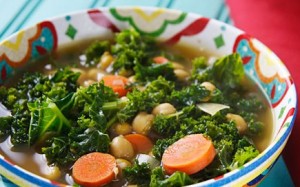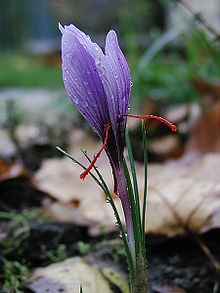
A door in the souk of the Tunis Medina
Last month as you all know was the tragic sinking of the Costa Concordia cruise ship. My mom and I had the pleasure of experiencing that beautiful ship a few years ago while traveling in the Mediterranean. I hadn’t thought much about that trip for awhile, but as soon as I heard of the tragedy those memories started to return. Then is when I was first introduced to saffron and other spices not commonly used here in the states. We visited Tunisia and the souks of the Tunis Medina where we explored the local perfumeries and spice markets. I have lots of photographs of our trip but could only choose one, this was one of my favorites. That was an experience of a lifetime and a place I would love to explore again…maybe someday. I hope that you can see it one day, too.
This seasoning combination is of my own devising, but it conjures up images of Morocco, Tunisia, and Egypt in my imagination. My son, Gary, is a lover of international cuisine so this spice inspired creation was with him in mind; little did I know that Kenny would appreciate this as well. If you can get saffron, please use it. It offers a unique flavor that there’s just no substitute for. This is truly a vegetarian soup, but chicken broth could be used and would only enhance the flavor.
2 teaspoons olive oil
1 large onion, chopped
2 carrots, sliced or diced
4 cloves garlic, minced or pressed
1 1/2 teaspoon ground cumin
1/2 teaspoon paprika
1/8-1/4 teaspoon chili powder or cayenne

Kale and Chickpea Soup
1/4 teaspoon allspice
1/2 teaspoon ground ginger
generous pinch saffron, lightly crushed
2 bay leaves
1 3-inch cinnamon stick
3 cups cooked chickpeas (or 2 cans, drained and rinsed)
8 cups vegetable broth (or water plus bouillon)
1 large bunch kale, thick center ribs removed and chopped (at least 8 cups)
2 cups water
salt to taste
In a large saucepan heat olive oil, add the onion and carrot and cook over medium-high heat until the onion begins to brown (about 5 minutes). Add the garlic and cook for an additional minute. Then add the spices, including bay leaves and cinnamon stick, and cook, stirring, for another minute. Add the chickpeas and stir to coat them with the spices. Pour in the 8 cups of vegetable stock, bring to a boil, and reduce heat to a simmer for 20 minutes.
Add the chopped kale and stir. If necessary add water to cover the kale and cook until it is tender, about 10-25 minutes, depending on how cooked you like your kale. Check frequently to see if it is becoming dry and add water as needed. Add salt to taste and serve.

Saffron Crocus
Notes:
The word saffron is derived from the Arabic word za’faran meaning yellow. Human cultivation and use of saffron spans more than 3,500 years and spans cultures, continents, and civilizations. Saffron, a spice derived from the dried stigmas of the saffron crocus (Crocus sativus), there are only 3 stigmas (referred to as saffron threads) per flower. Saffron is hand harvested so you can understand why it is so prized and so expensive. It takes about 13,125 threads to weigh one ounce. So through history it remained among the world’s most costly substances.
To read more about the history of saffron go to… http://en.wikipedia.org/wiki/History_of_saffron
Cooking with Saffron:
The most important rule is “don’t use too much”. A very little bit of saffron goes a long way and if overused becomes overpowering and leaves a “medicinal” flavor. When determining how much saffron to use in cooking, remember that the saffron flavor will be stronger the second day. In general, just use a pinch in soups and stews that serve 4 to 6 people.
A few additional hints…if your recipe includes liquid (water, broth, or wine), use a little of it and pour over the saffron. Turmeric may be substituted for the color properties, not the flavor.
Do not use wooden utensils when mixing saffron, wood utensils tend to absorb saffron easily, and since saffron is expensive, you don’t want to waste it…plus it “stains” your wood.
Tags: allspice, bay leaf, carrots, cayenne pepper, chickpeas, cinnamon, cumin, Garlic, ginger, kale, onions, paprika, Saffron, Vegetarian


